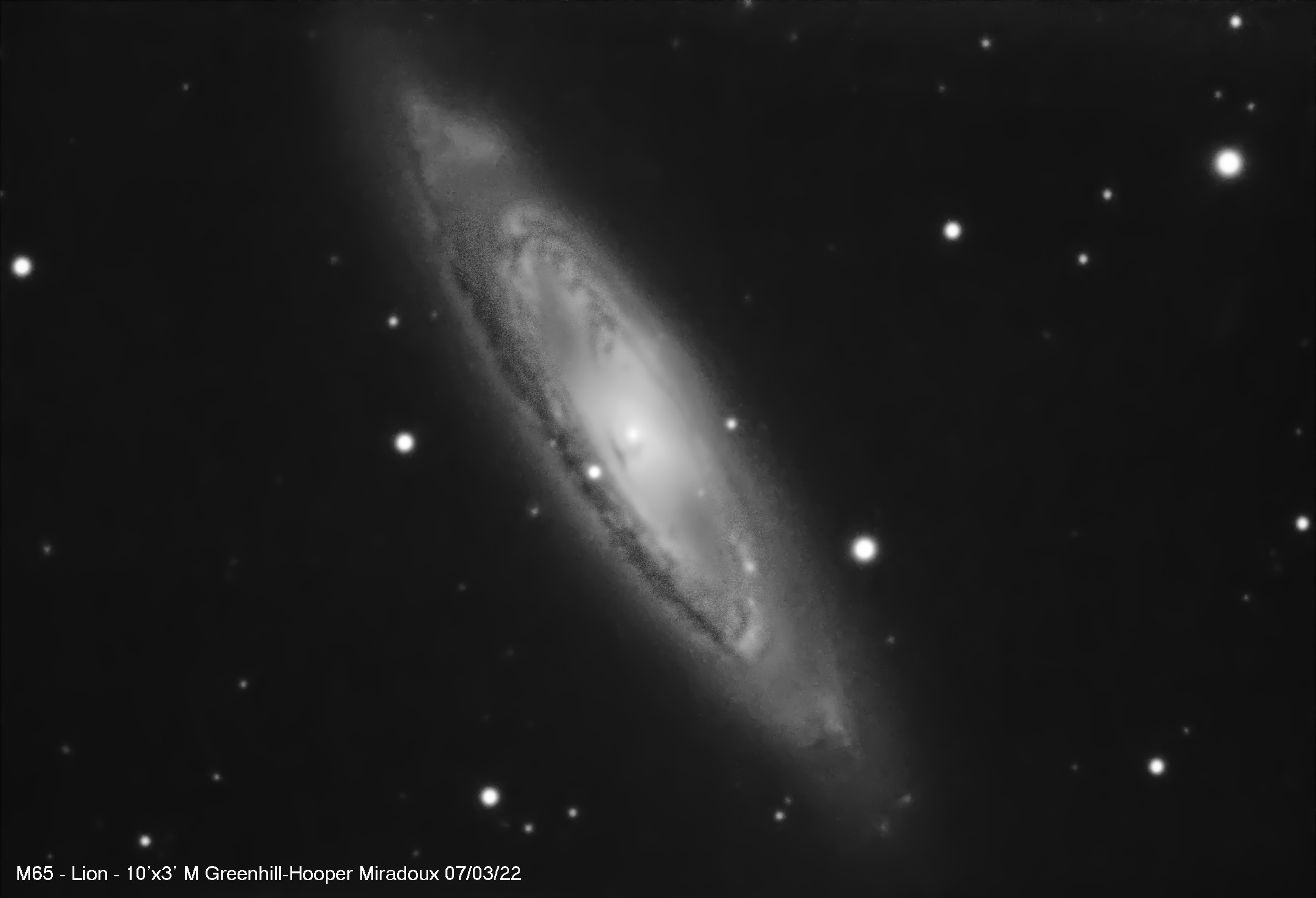Observation by Mike Greenhill-Hooper: M65 EAA image
Uploaded by
Mike Greenhill-Hooper
Observer
Mike Greenhill-Hooper
Observed
2022 Mar 07 - 22:15
Uploaded
2022 Mar 09 - 11:05
Objects
M65
Planetarium overlay
Constellation
Leo
Field centre
RA: 11h18m
Dec: +13°05'
Position angle: -40°01'
Field size
0°10' × 0°07'
Equipment
- Telescope: 20" f/4 Obsession Dobsonian with Paracorr coma corrector
- ASI294MMPro CMOS imaging camera
Exposure
5x5min "live capture" on SharpCap Pro; 2s exposure, gain 450, -15C, dark subtraction
Location
Miradoux, S.W. France
Target name
M65 in B&W using SharpCap Pro Live Stacking
Title
M65 EAA image
About this image
I have been wrestling with imaging small deep sky targets with my SCT (Celestron C11) for sometime. The problem is the need to autoguide via an OAG. I have difficulty finding bright enough stars near to the object and then they often look distorted even though I have tried working close to the correct back focus. PHD2 struggles a lot and the final images are not great, either at f/10 or with focal reducer at f/6.3. So I have now made my first attempts to image with my light bucket Dobsonian (20", f/4). It has Goto and is motorised (ServoCat + ArgoNavis), but autoguiding is not possible (without a lot of effort). The attached is a stack of 5 separate 5 minute live stacks captured with SharpCap Pro of M65. No autoguiding is necessary. I just had to pause the stacking process between the 5 minute stacks and move the mount slightly with the hand controller and then resume the stack. Subtraction of previously recorded dark frames is made automatically. I didn't bother with flats subtraction. The light gathering power of the telescope and the sensitivity of the camera meant that at a focal length of 2000mm a small magnified field of view is possible with short exposures and consequently sharp images can be obtained. The attached were taken just with a uv/IR blocking filter. My next step will be to see if I can take separate RGB stacks and try and combine them without saturating the final image. I had previously thought that "EAA" - electronically assisted astronomy was a bit of a compromise, but I find the results are better than I could obtain with my poorly auto-guided C11.
Files associated with this observation
Like this image
Copyright of all images and other observations submitted to the BAA remains with the owner of the work.
Reproduction of work by third parties is expressly forbidden without the consent of the copyright
holder. By submitting images to this online gallery, you grant the BAA permission to reproduce them in
any
of our publications.


